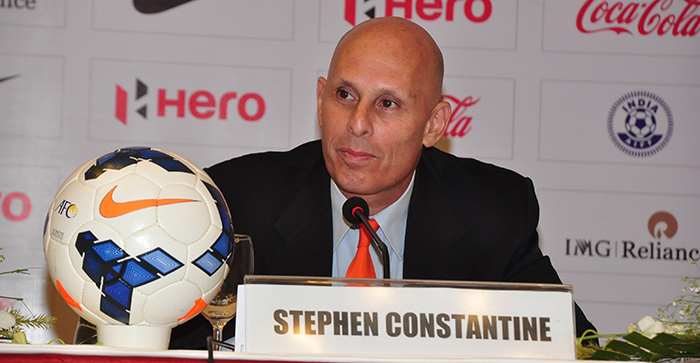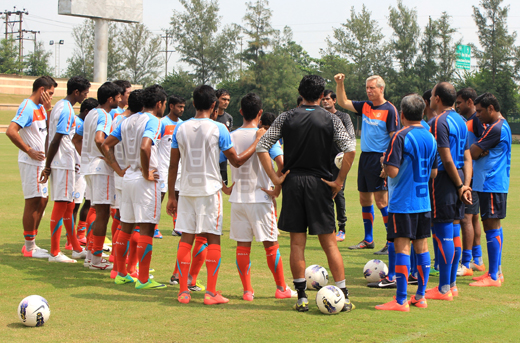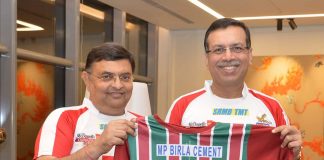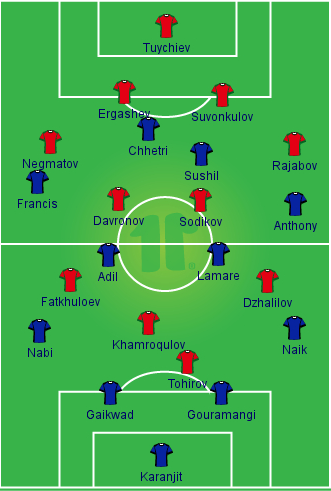
India vs Tajikistan records so far has been extremely fair. India has played Tajikistan 3 times, winning once, drawing once and losing once. Last time the teams met for AFC Challenge Cup, on 9th March 2012, India lost the game 0-2. 2012 AFC Challenge Cup, managed by interim coach and current assistant coach Savio Madeira, was indeed an disaster for India. Here, we document the mistakes Savio Madeira’s boys made in the match.
1) India’s inability to make most out of the initial dominance
From about 10 minutes into the game, Indians were able to make decent chances, and after 20 minutes or so, Indians were slowly on the top. Most of the first half, barring the first 10 minutes and last 5, India enjoyed more incisive chances and general looked better than their opponents. Although they were not the perfect, it helped that Tajikistan were playing a mistake ridden game. However, India never showed the urgency to make most out of their superiority. They kept on playing a low tempo game, mostly trying to draw the opponent so they can counter through long balls.
2) Sunil Chhetri’s poor game and lack of support
India relied heavily on their star striker, Sunil Chhetri, to score. He was not in the best of his touches, squandering many opportunities. He was able to torment the Tajikistan backline as Indians kept on shooting long balls towards him, but either he was unable to beat the last defender or, in case of aerial balls, physical superiority and height of Tajikistan defenders was too much for him. However, few times he was able to draw in defenders towards him and give through balls to his team-mates, all of which were wasted. The best chance came when he passed to Anthony Parreira in the 19th minute, who shot over the bar with only the Tajikistan goalkeeper at his mercy.
3) Poor choice of support striker – Sushil Singh
Savio Madeira used Sushil Singh as support striker. Sushil was largely invisible, making only a couple of productive moves in the whole game. His positional sense was poor and thus, whenever Chhetri or one of the wingers got the ball close to the opponent box, he was not in a good position to receive the final pass. He was also not able to track back to support the midfield and bring the ball forward for Chhetri.
4) Too cautious wingplay
Indian wingers, Francis Fernandes and Anthony Parreira hardly looked threatening and came to dangerous positions very few times. Savio Madeira started the game with an extremely cautious approach, and even when India looked like the better team the approach didn’t change. Very few crosses came from the flanks, and wingers ‘cutting’ inside the box was even rarer sight.
5) Lack of midfield play
Most of the Indian chances came as a result of ‘long balls’. Barring few moments, combination play, passing among midfielders, built up in front of opponent’s box were severely lacking. Indian central midfielders, Adil Khan and Rocus Lamare, did a decent job in snatching the ball from opponents, and occasionally turning up outside the opponent’s box to take shots, but they were unable to retain the ball or create chances through the middle.
6) Rahim Nabi’s poor form
The first goal in the 60th minute was a freakish goal, entirely due to Nabi’s mistake. The build up by Tajikistan was good, but eventually the ball was going out, Nabi was tracking back and the outgoing ball hit him, came back to the Khamroqulov, who had no other choice other than slotting in past Karanjit Singh. Apart from this, Nabi was hardly able to make any attacking moves from the left, and he was unable to combine with Left winger, Francis Fernandes, whose lack of international experience was clearly visible. In the second half, Tajikistan were repeatedly allowed to attack from Nabi’s side either through the full back Negmatov or winger Fatkhuloev. Overall Nabi had an ordinary game both in attacking and defensive front and he was responsible for the first goal.
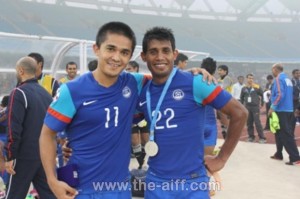
7) Unable to contain opponent fullbacks
In the second half, Tajikistan tormented Indian backline through the clever runs by opponent fullbacks, who combined with the wingers who then would make a move more centrally. Left fullback Rajabov in particular was more effective and was involved in many threatening moves, one of which resulted in the first goal. Indian full backs were regularly caught napping while trying to negate the threat of the opponent fullback and winger. Savio was unable to find a solution for this, with the Indian wingers, especially Francis, not making much impact to negate this threat.
8) Deep defending
Indians used the same defending technique which they had been using since Bob Houghton’s era. Under pressure, the midfielders would track back in front of their box, crowding it with almost a 8 man defense. This, of course, allows Indians to draw the opponent to their side and then hoof in a ‘long ball’ for the couple of forwards not involved in the defensive job. This, however, gives ample opportunity to the opposition and creates confusion outside the box. The second goal by Nuruddin Davronov was an classic example of that, Davronov picked up a ball outside the box and his shot found the back of the net.
9) Failing to exploit the space outside Tajikistan box
Tajikistan midfield looked more comfortable while attacking than defending. They gave Indians ample space outside their box, however, Indians lacked a creative midfielder to use it, Sushil Singh as supporting striker was unable to use it and shots by Chhetri, Adil and Lamare from outside the box were extremely weak or wayward. During the whole match Indians were unable to force the Tajikistan goalkeeper to make a single diving save.
Click here to read more Football Tactics articles related to Indian Football







